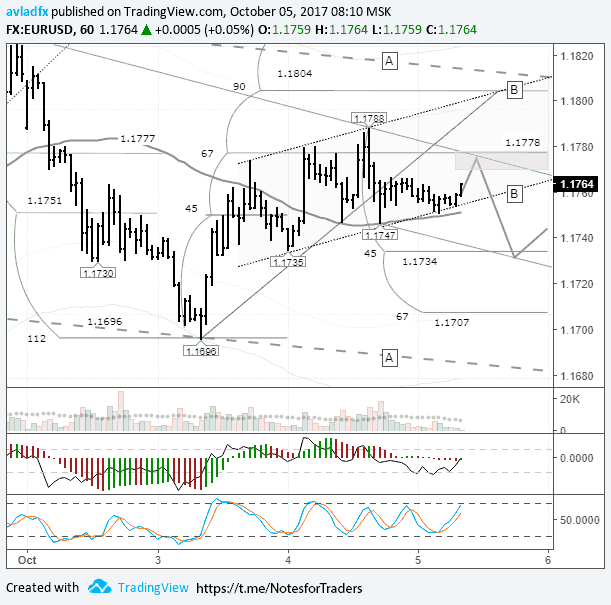Previous:
On Wednesday the 4th of October, trading on the euro closed up against the US dollar. The day turned out to be rather volatile, but market participants failed to determine the future direction of the pair.
During the US session, the single currency dropped from 1.1788 to 1.1747 levels. The dollar was propped up by a strong services PMI from ISM in the US. This decline didn’t continue, however, as traders started preparing themselves for Federal Reserve chair Janet Yellen’s speech.
Yellen made no mention of interest rates or the US economy, so markets ignored her comments.
US data:
ISM services PMI (Sep): 59.8 (forecast: 55.4, previous: 55.3).
Day’s news (GMT+3):

Fig 1. EUR/USD rate on the hourly. Source: TradingView
We’ve got two price channels on the hourly timeframe. The B-B channel is embedded in the A-A channel. On Thursday, the A-A channel ranges from 1.1684 to 1.1812. On the B-B channel, the part that interests us is the lower boundary at 1.1754, since the price has been trading around this level for several hours.
Given that the Stochastic oscillator is pointing upwards, I was expecting that the price would rise to the trend line (taken from the 1.1833 top reached on 29/09/17).
The lower boundary of the B-B channel is bolstered by the LB balance line. I’m waiting for this support zone to be broken and for the euro to recommence its decline to reach 1.1734, and then 1.1707.
Catalonia is set to declare independence on Monday, regardless of whether or not the rest of the world recognises it. Political tensions in Europe are rising. If pressure on the euro increases through the crosses, we could see it drop as far 1.1678 by Friday’s close.







